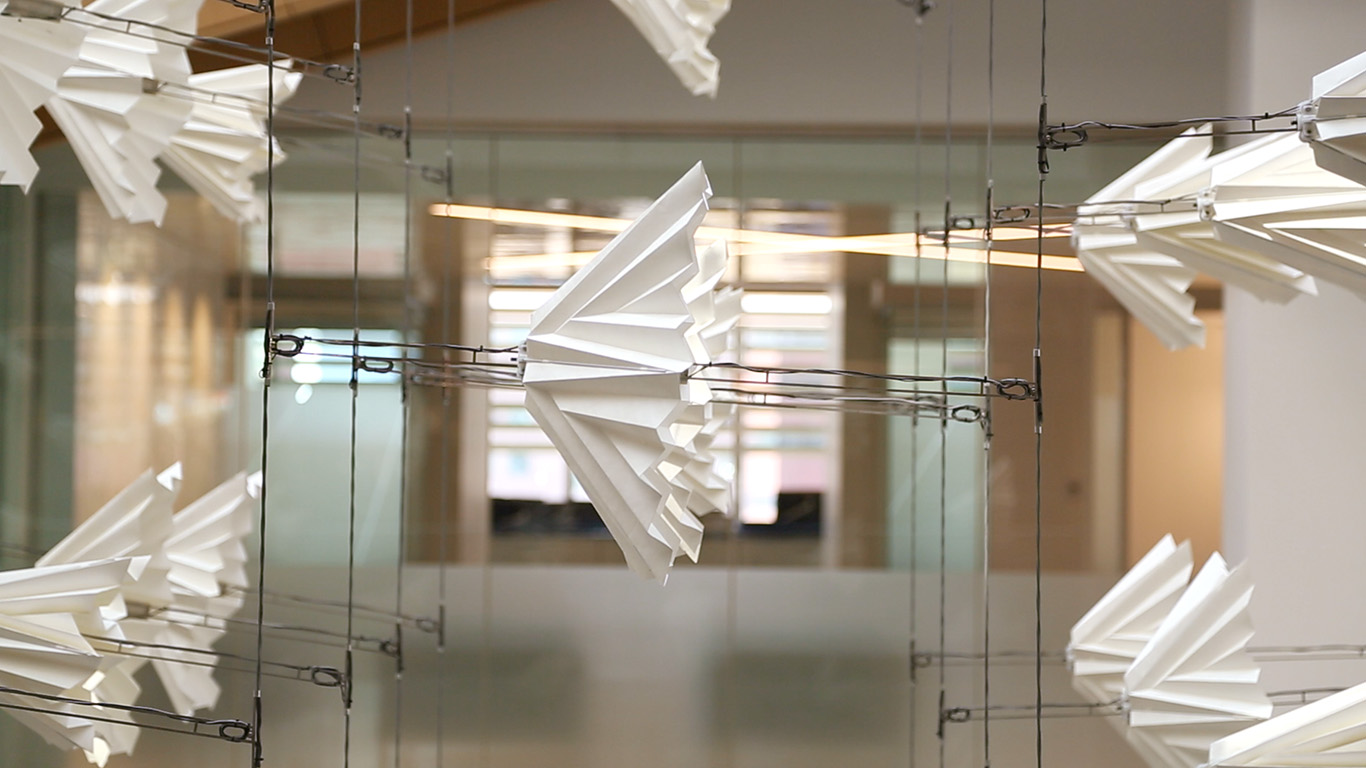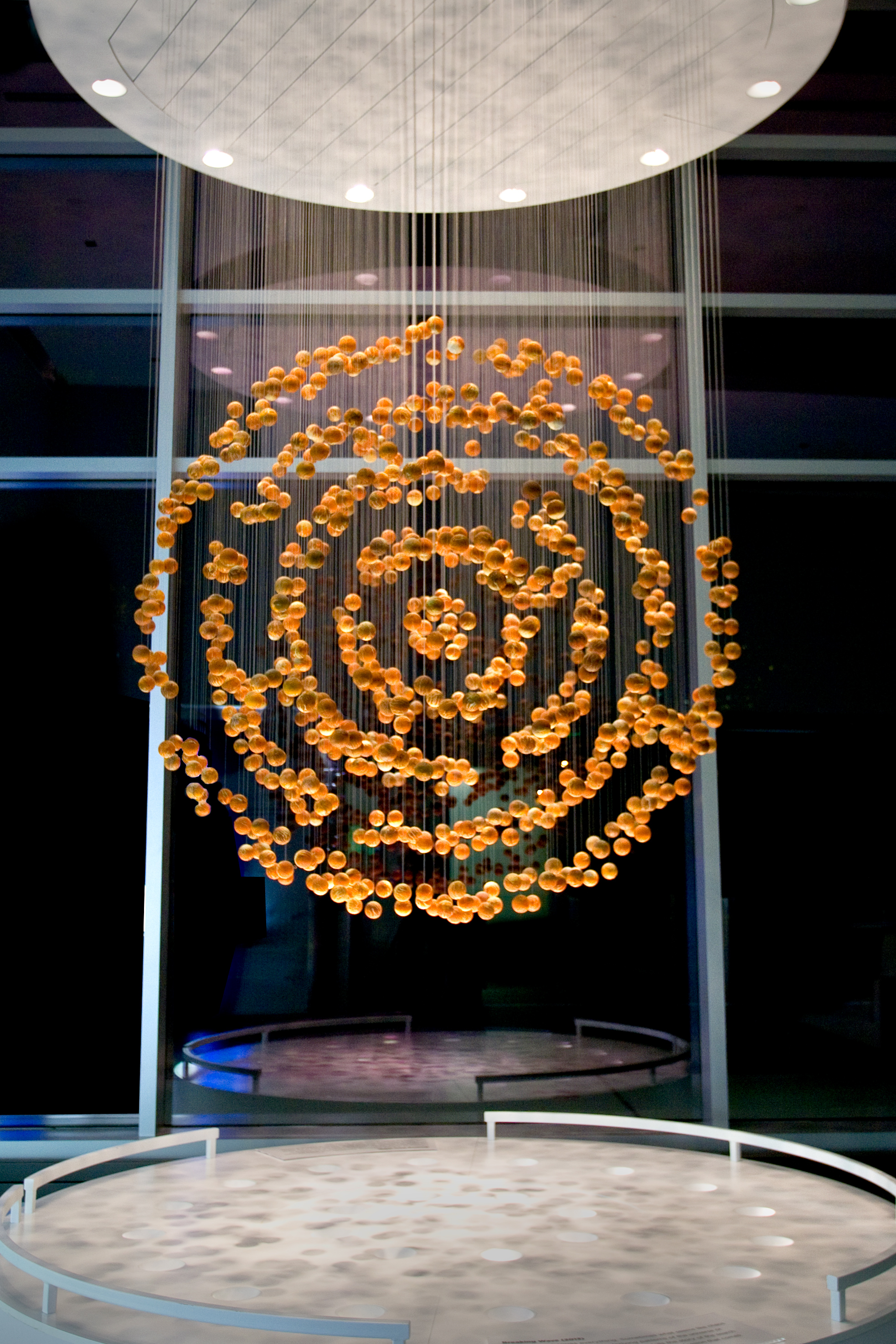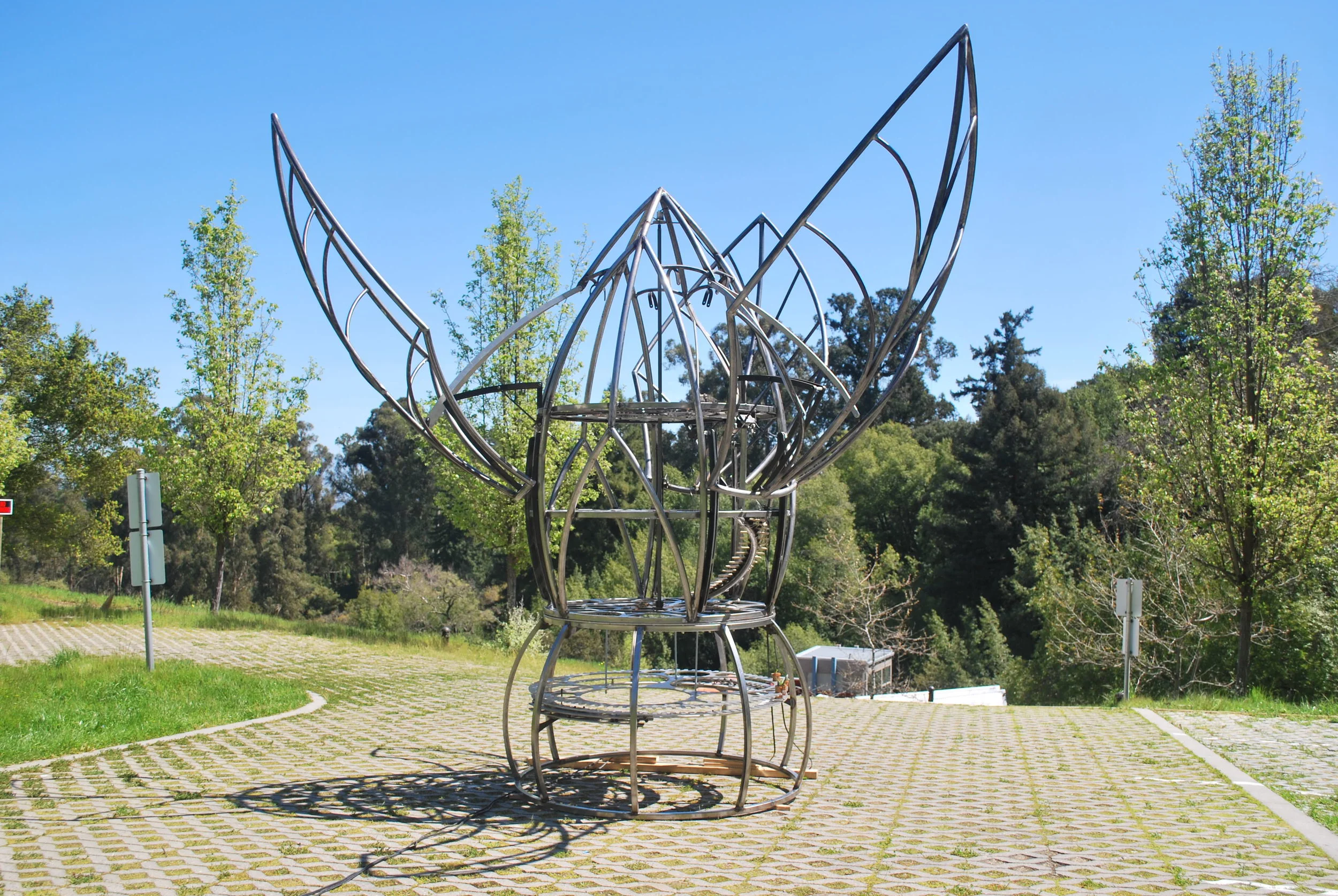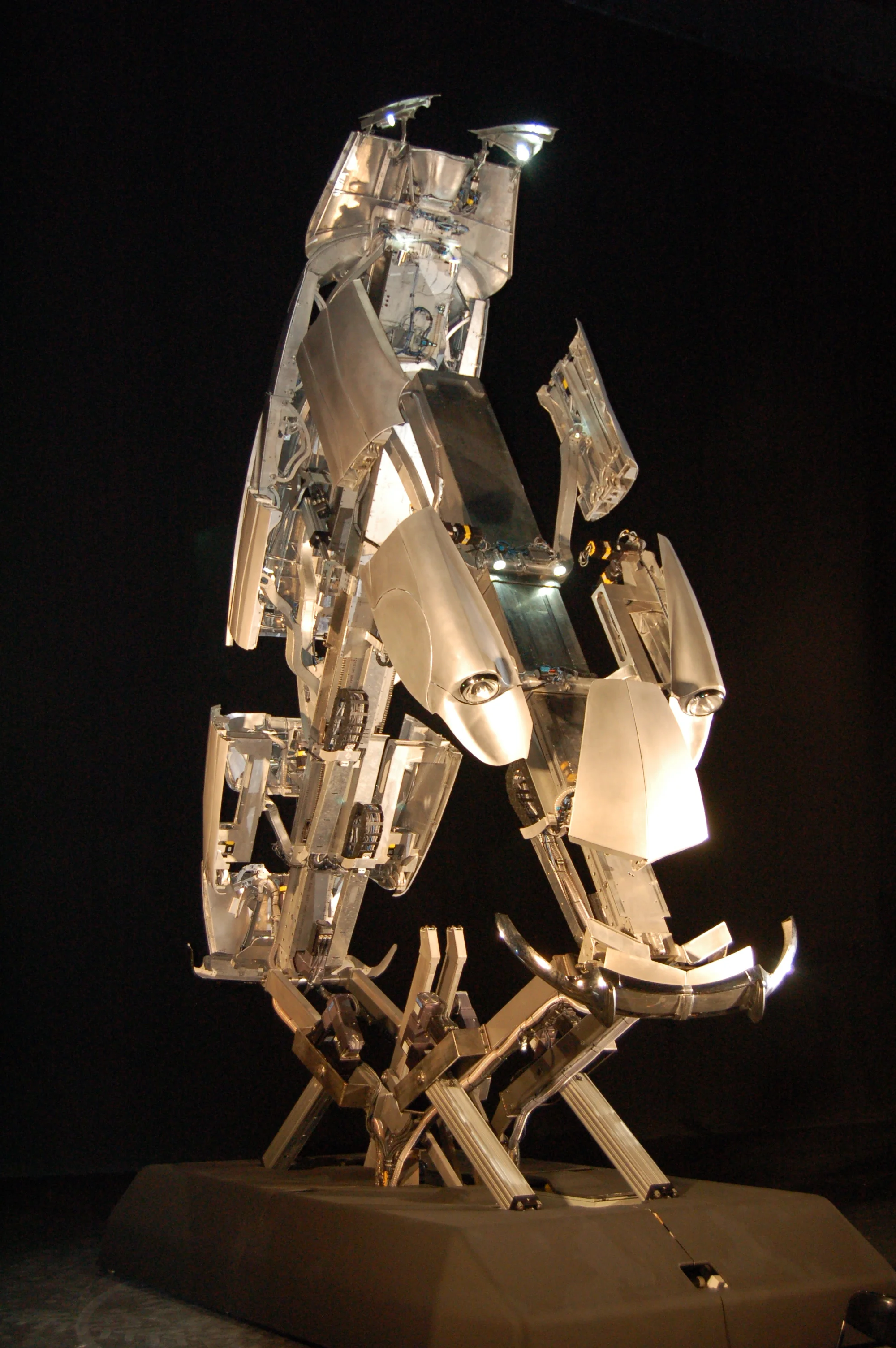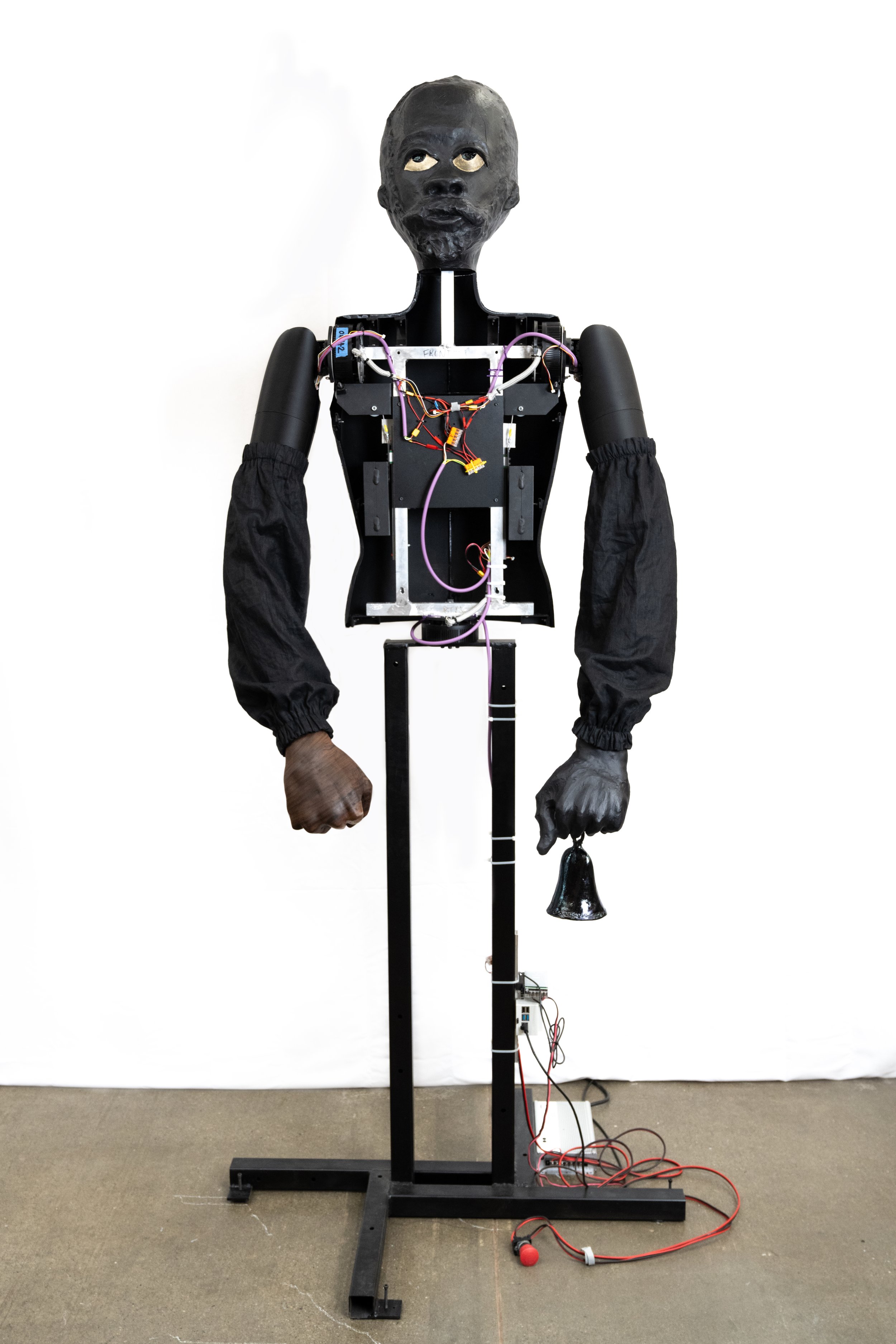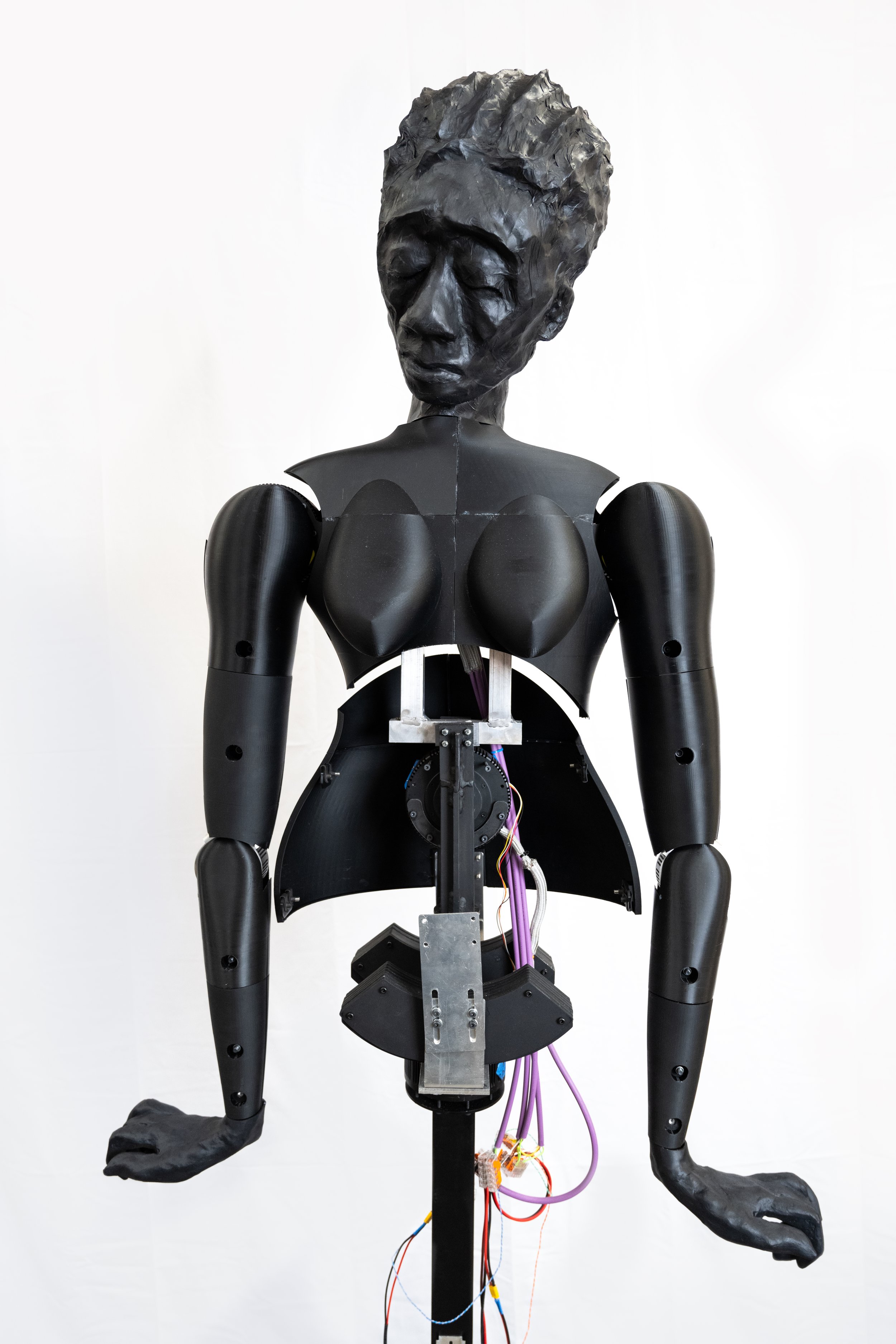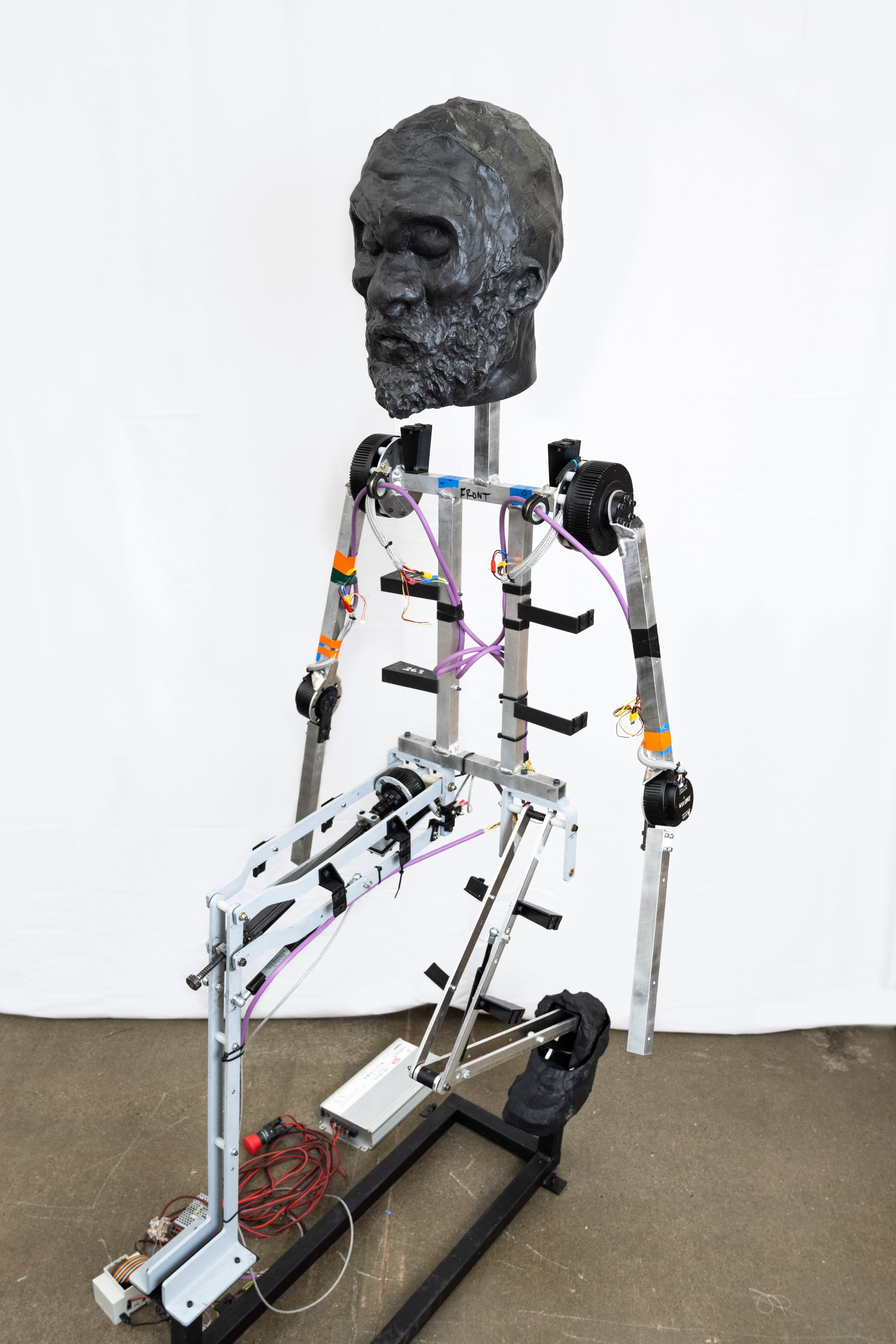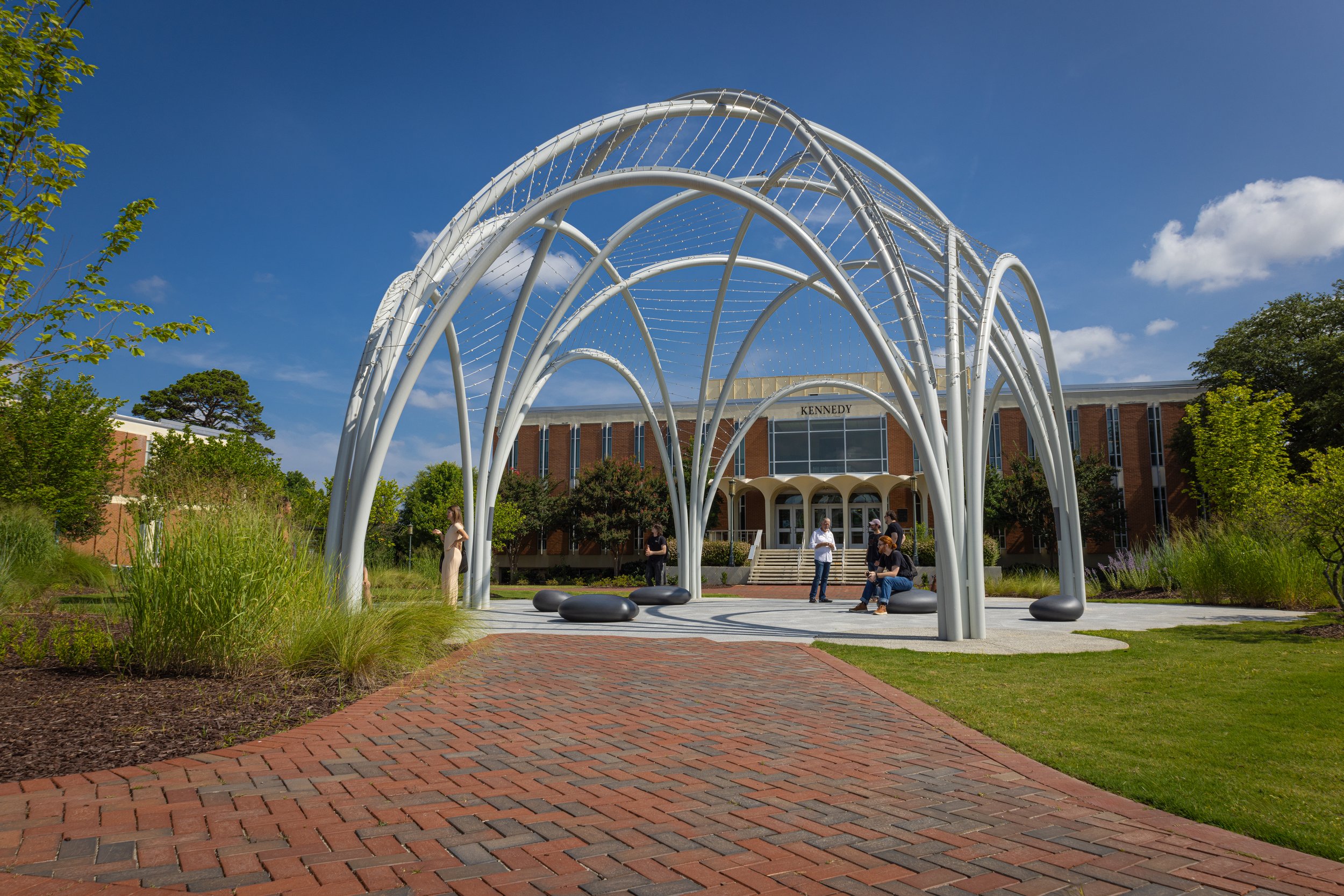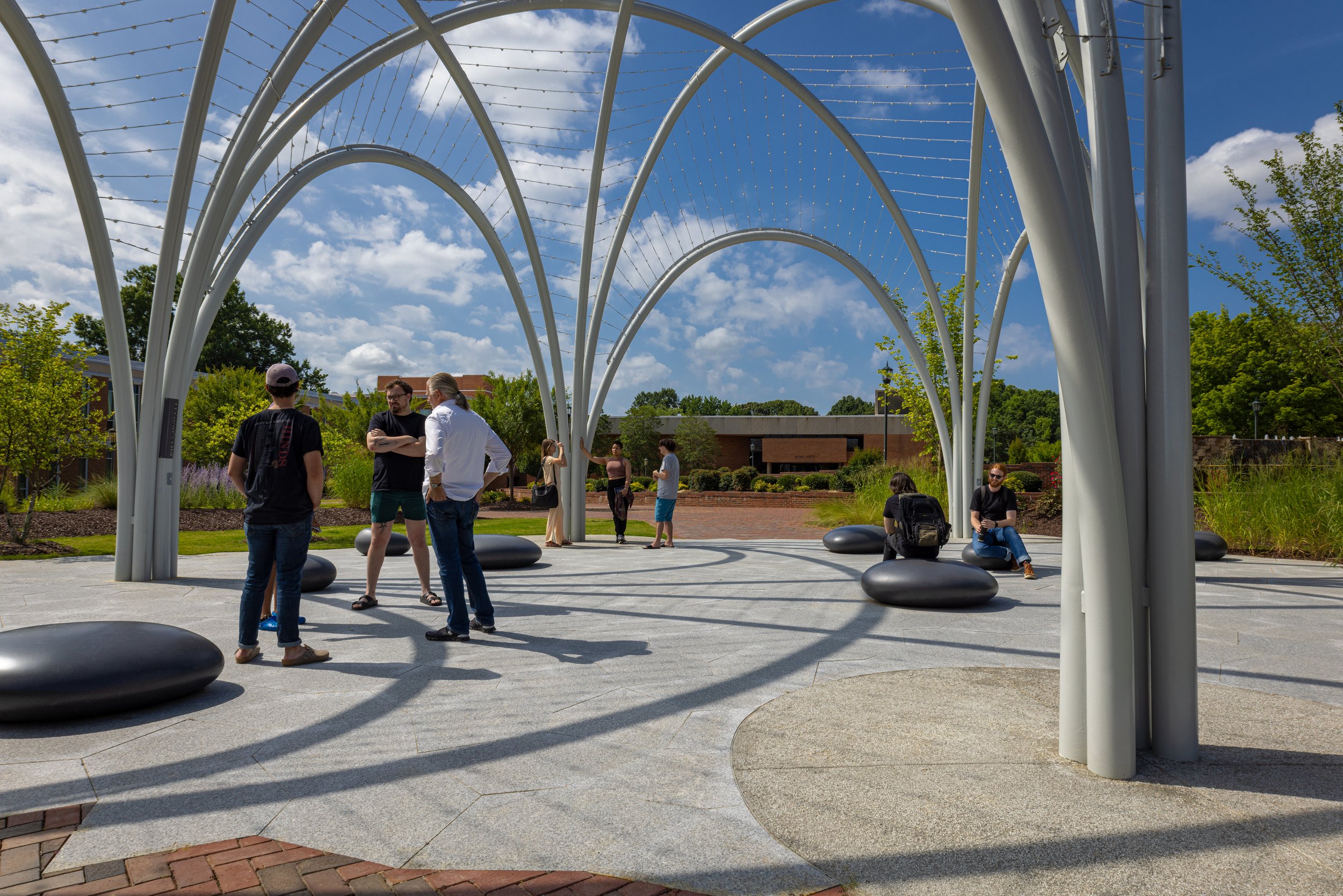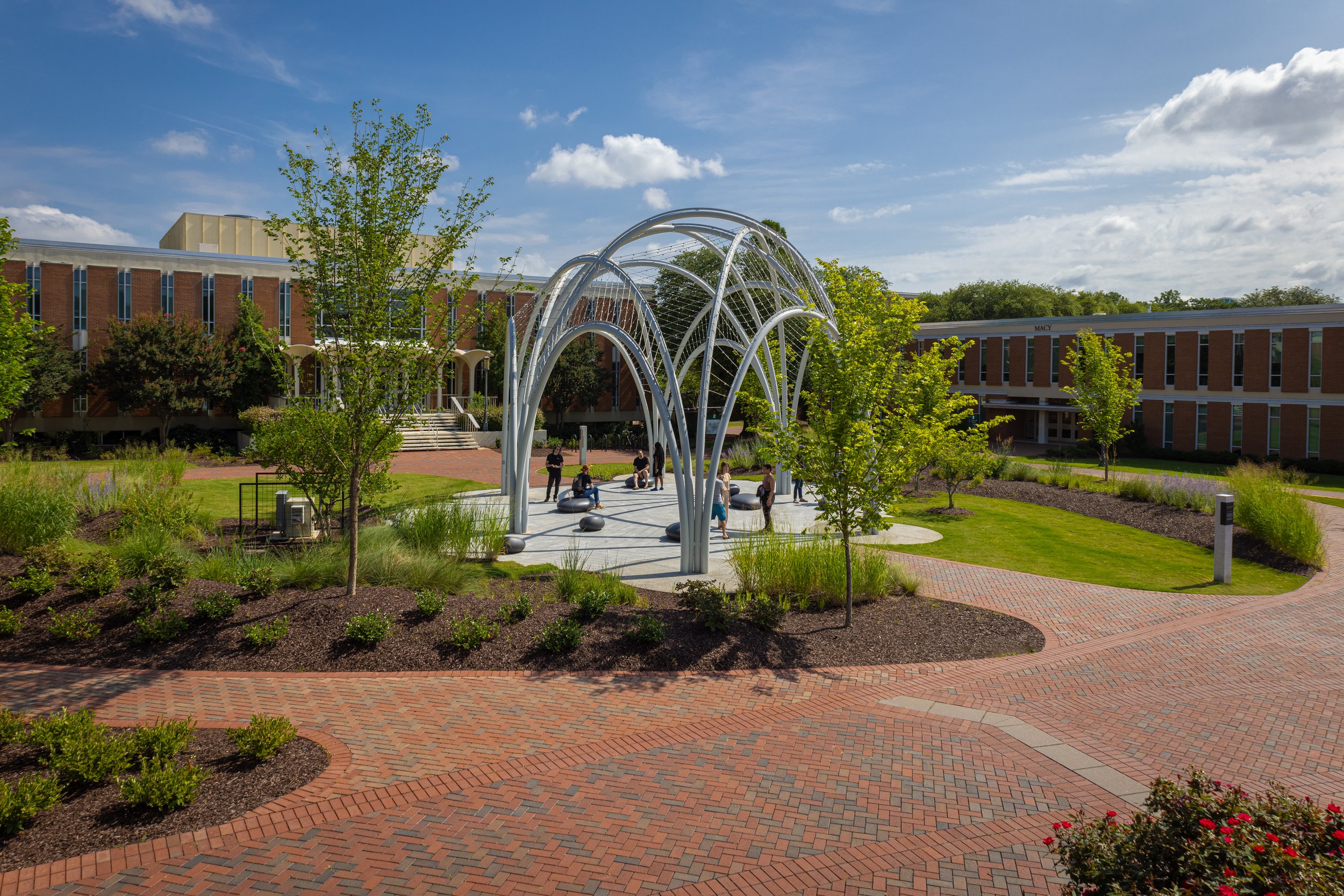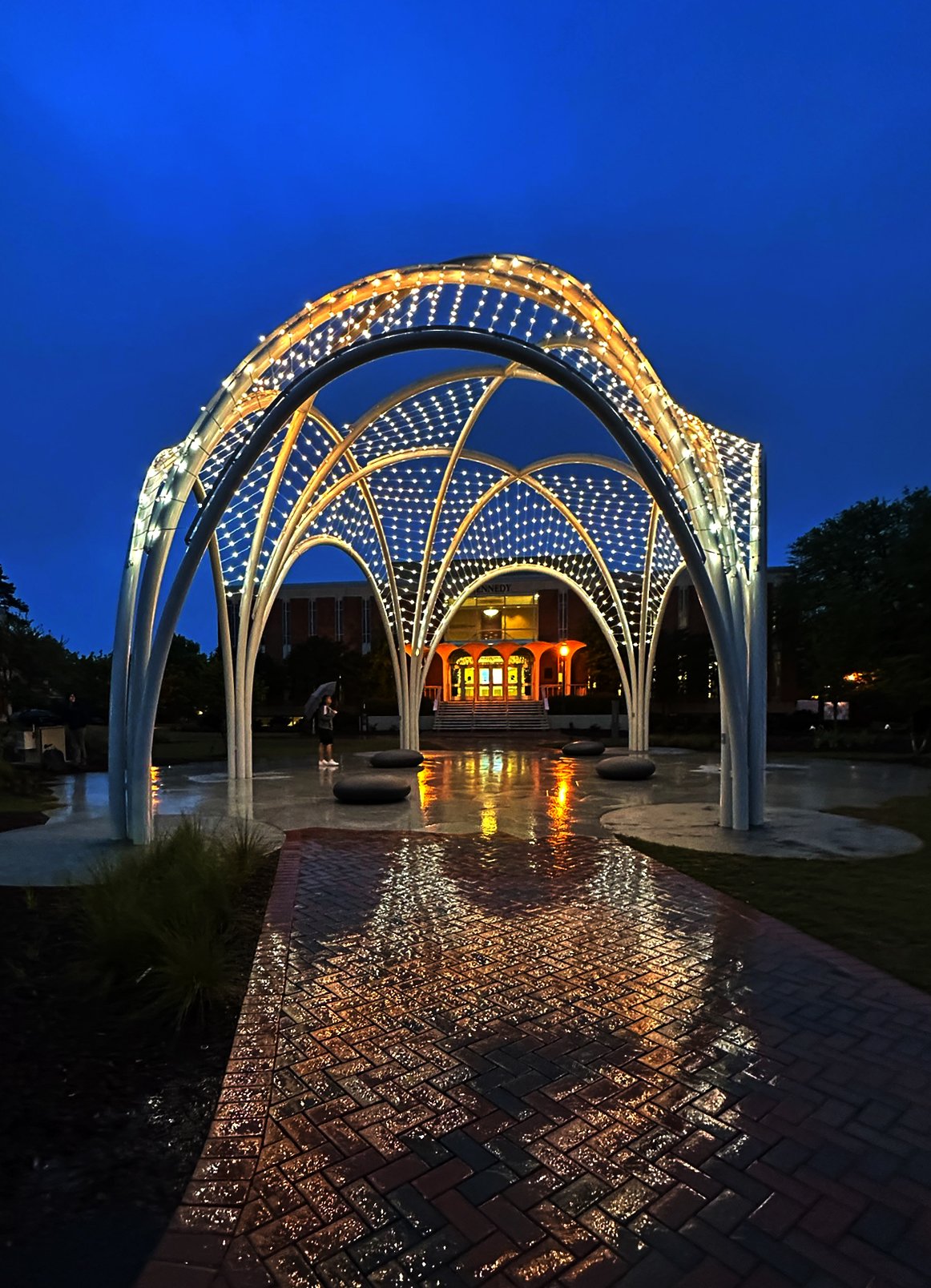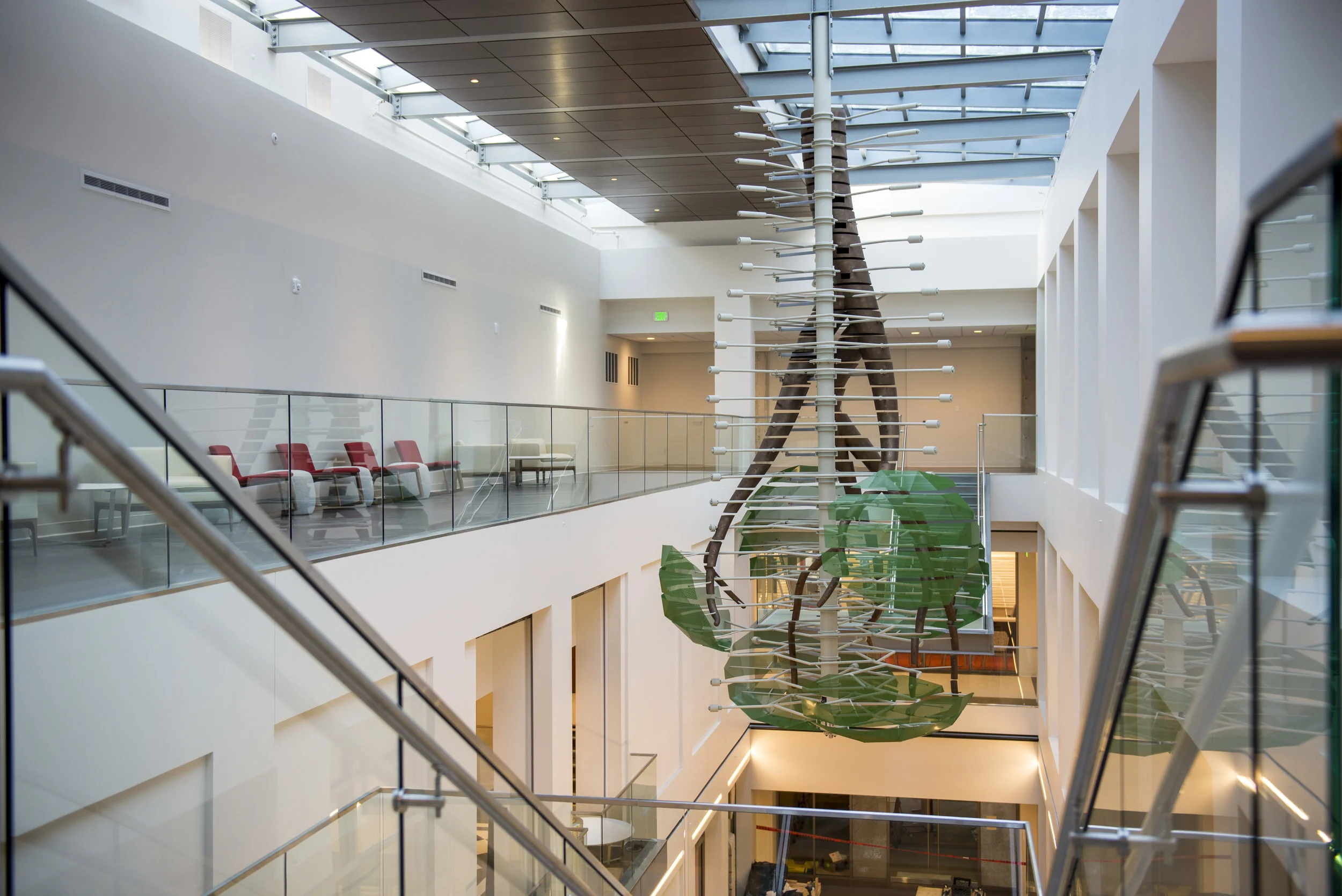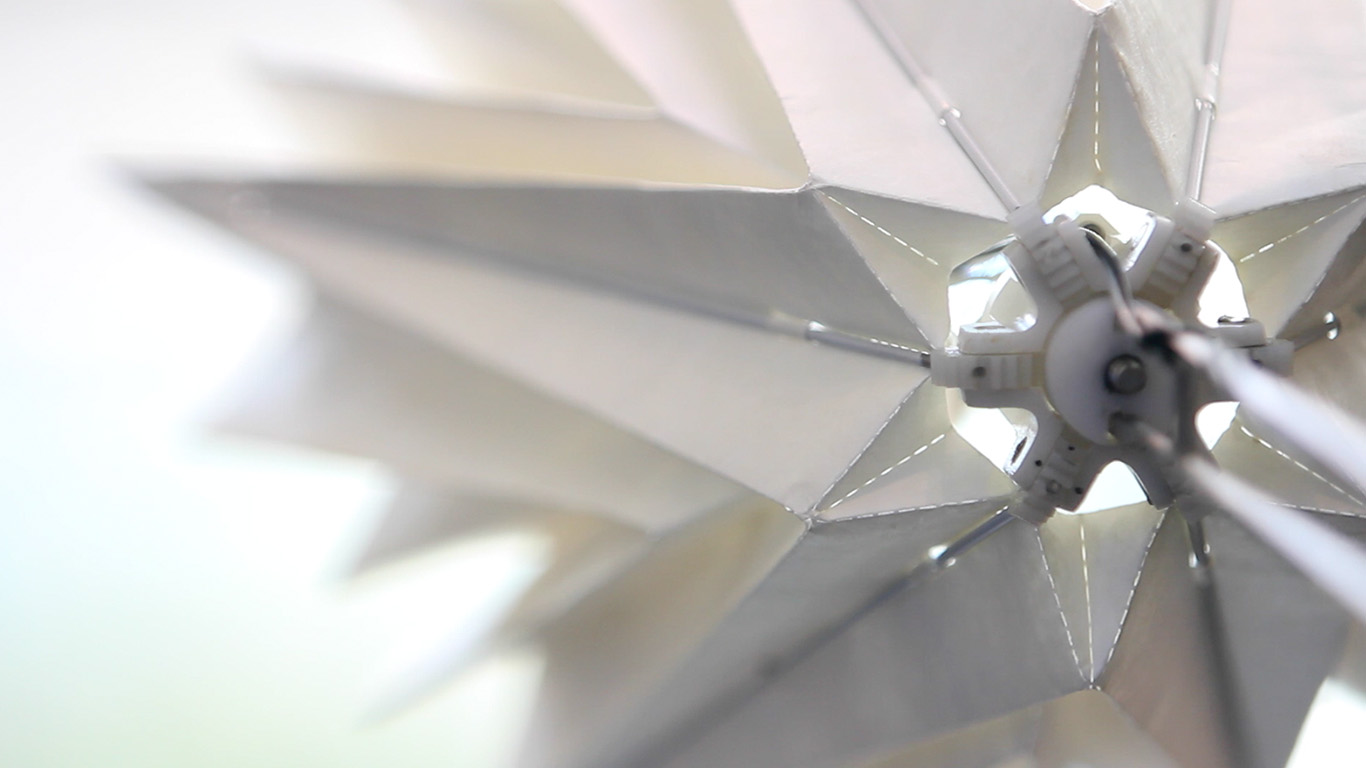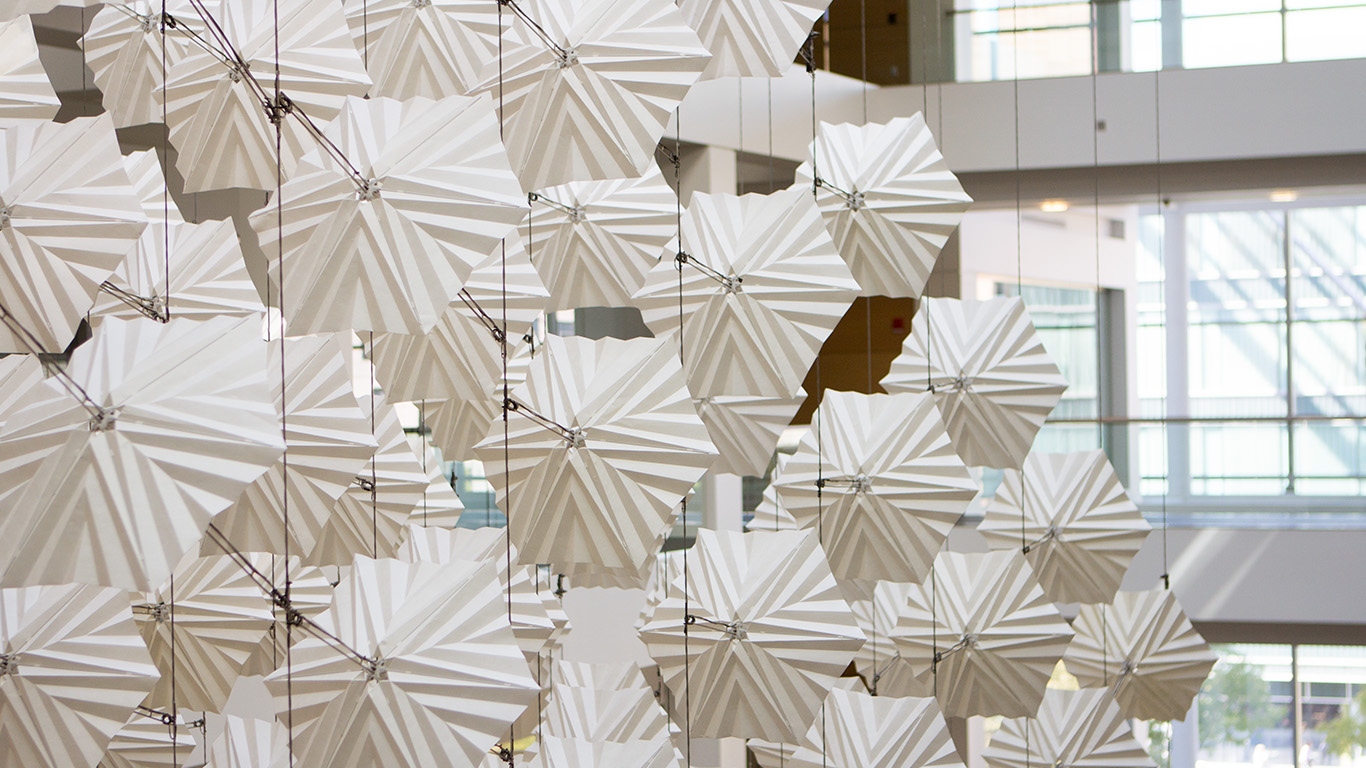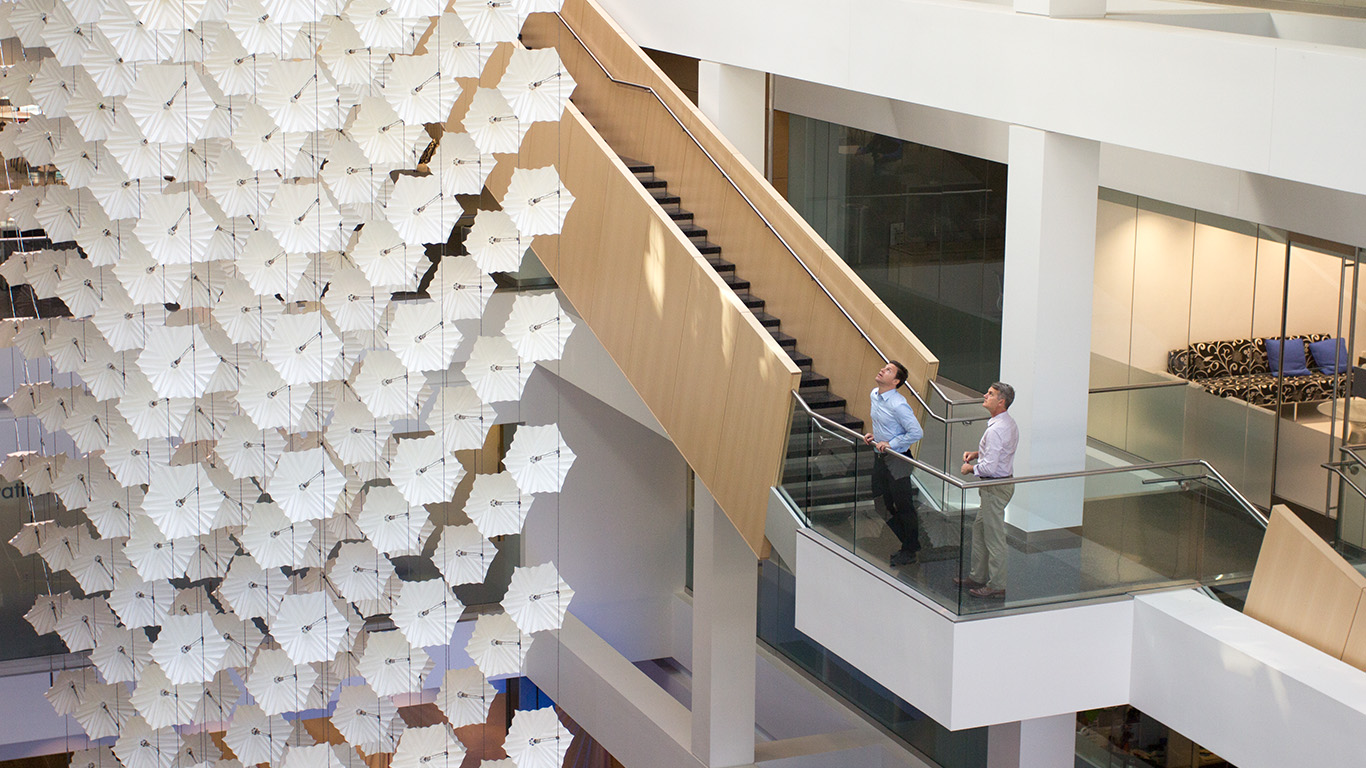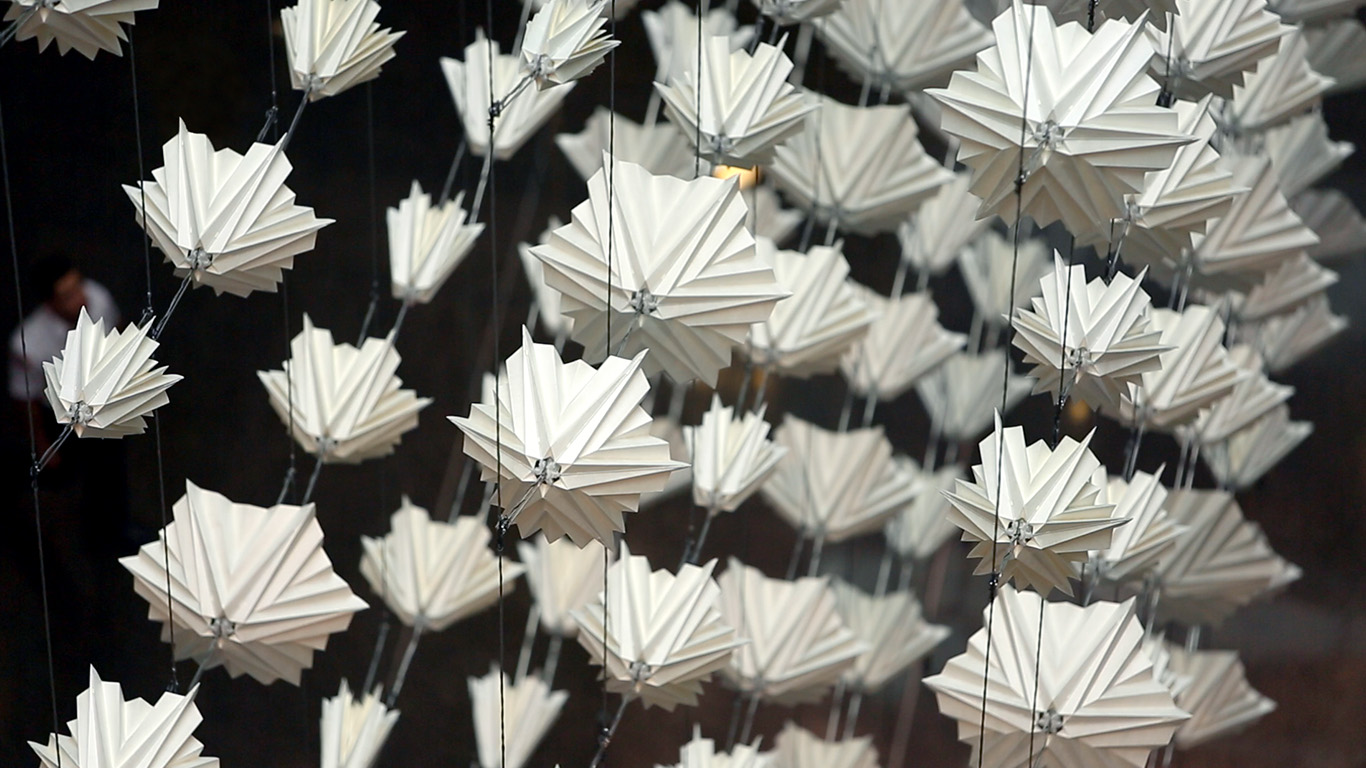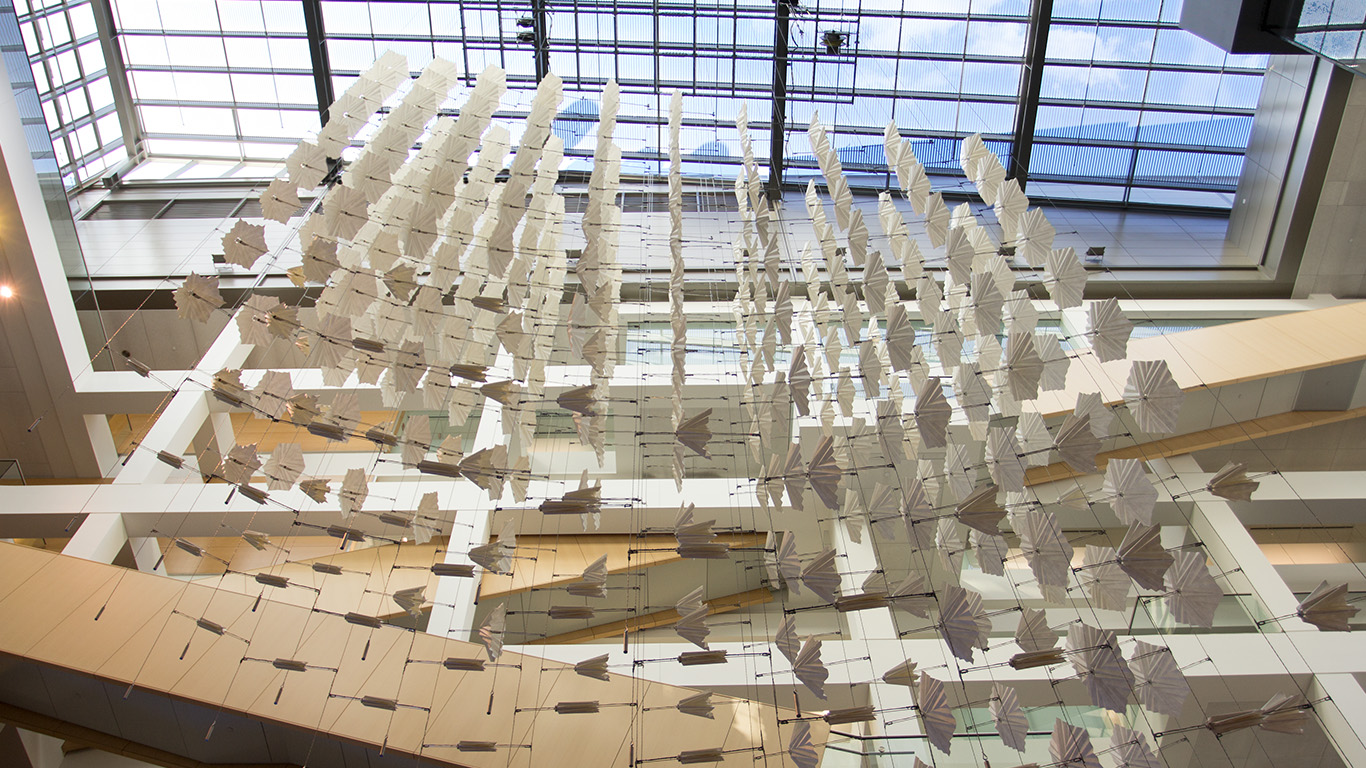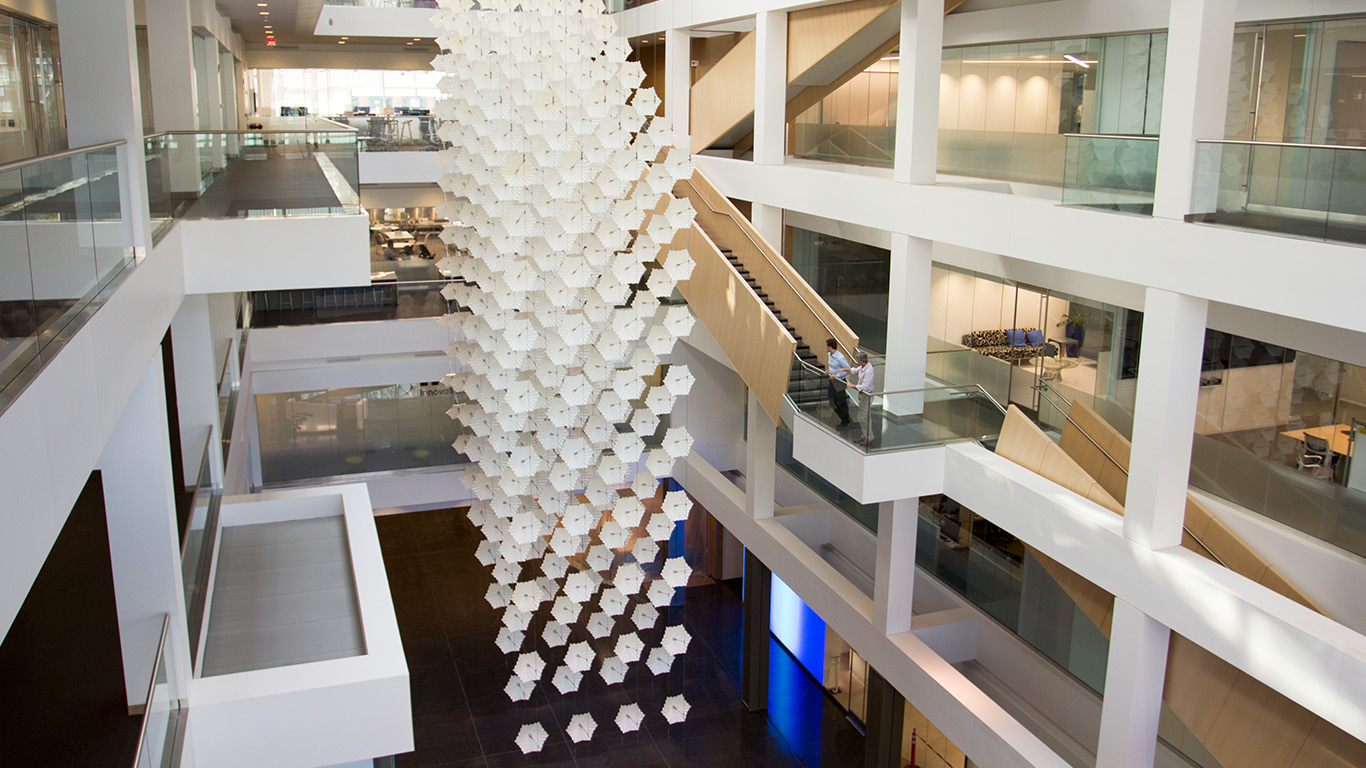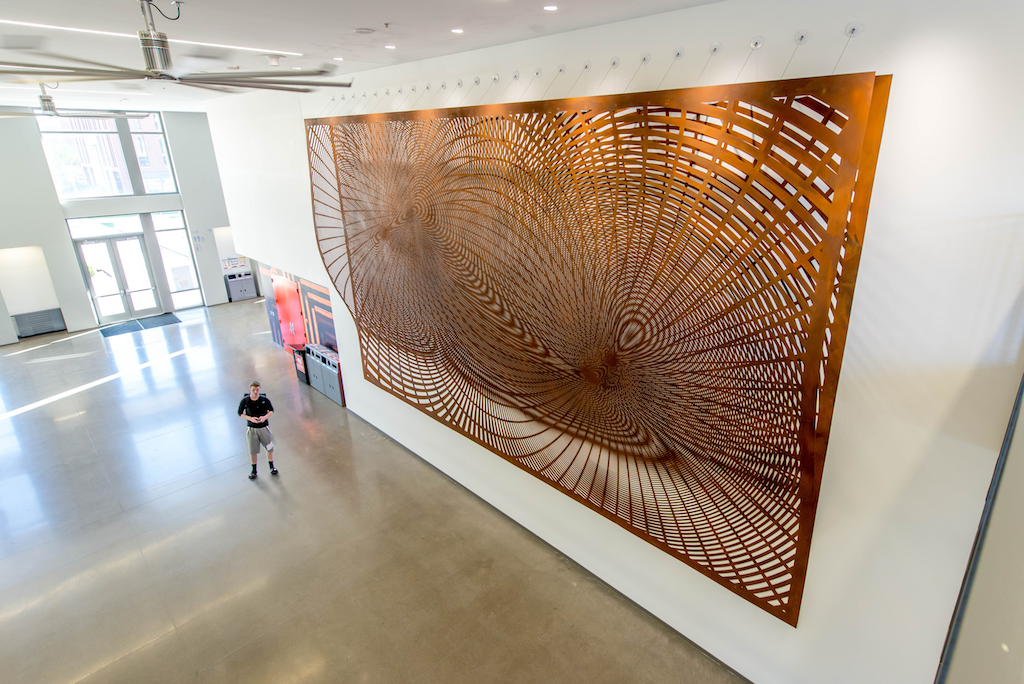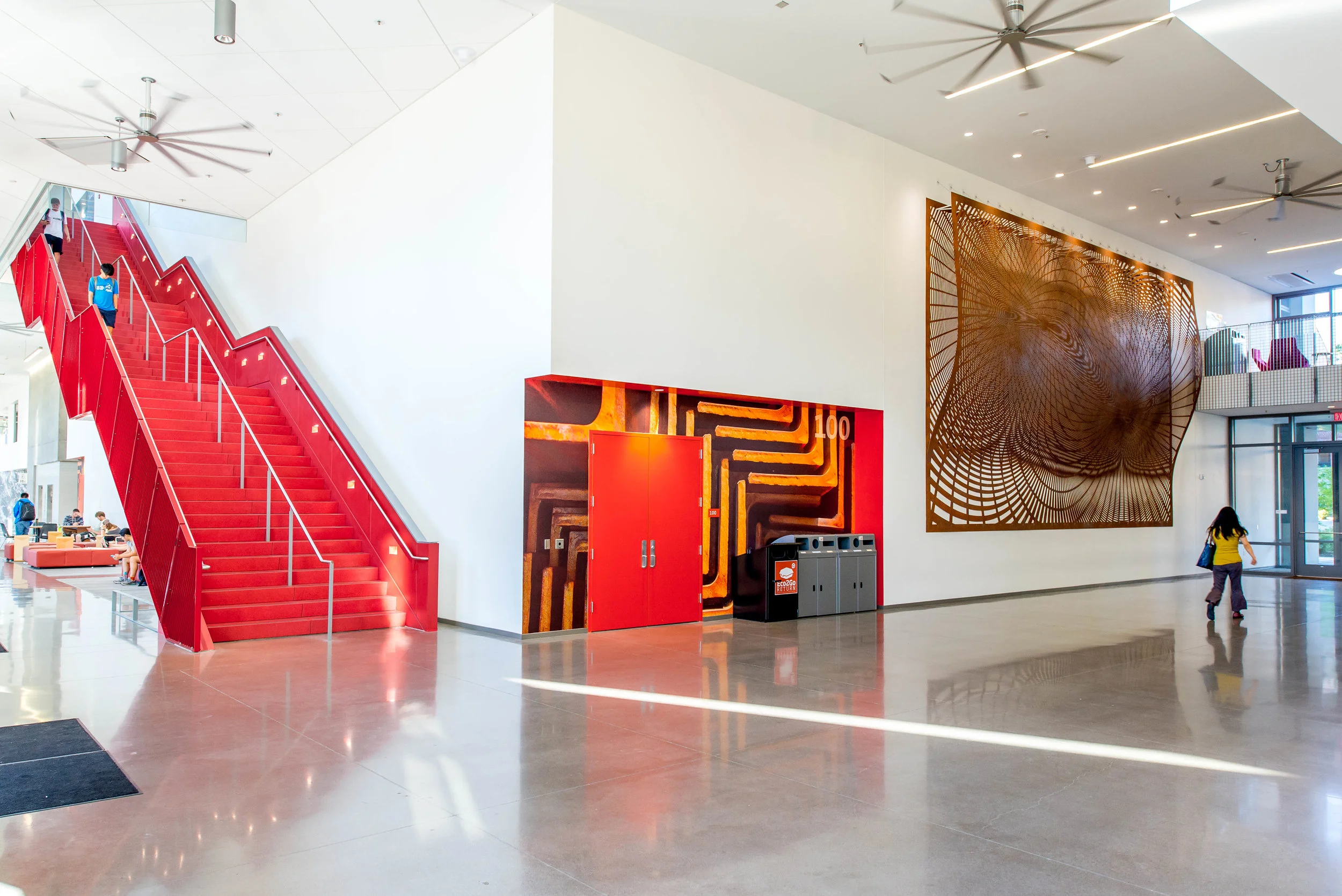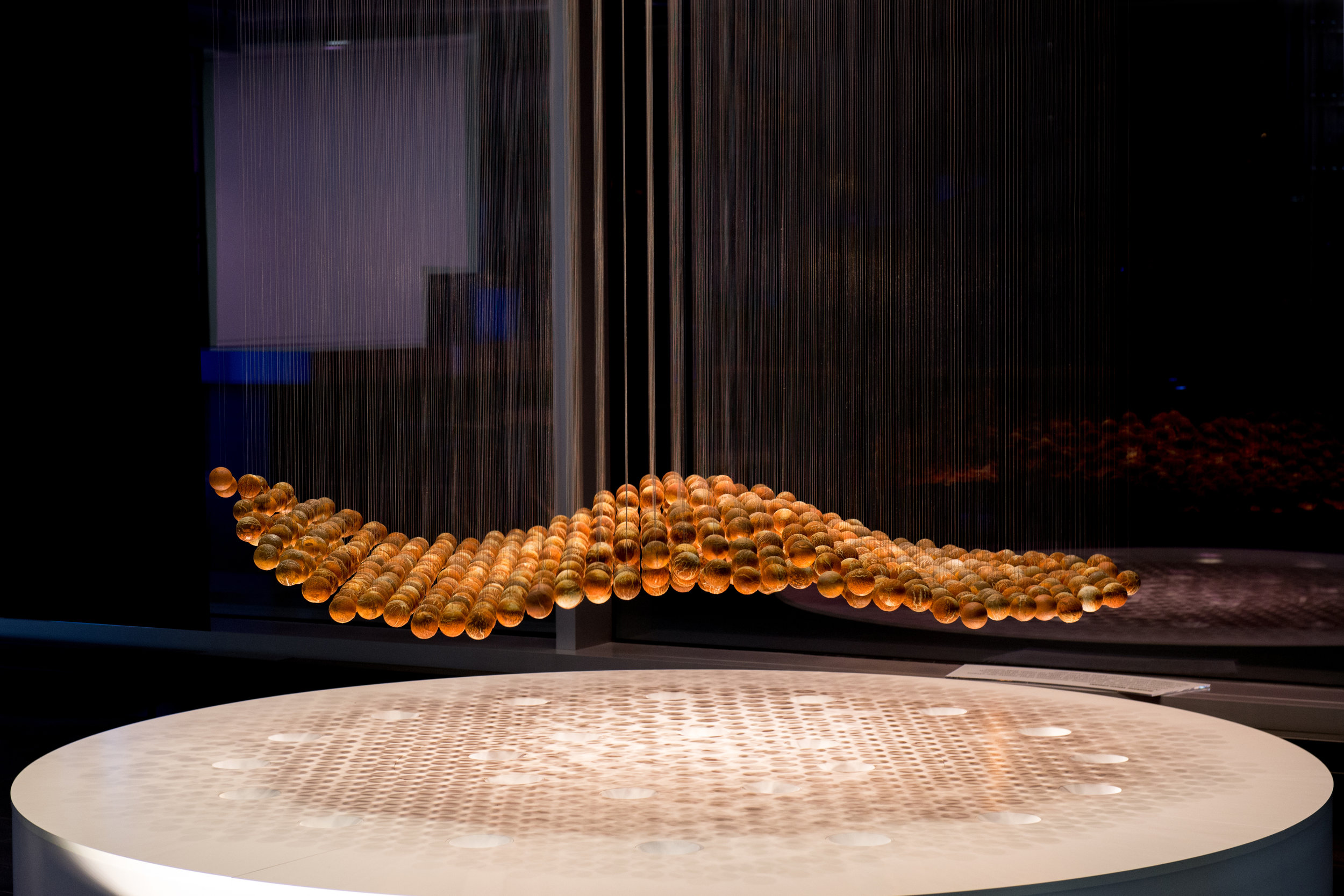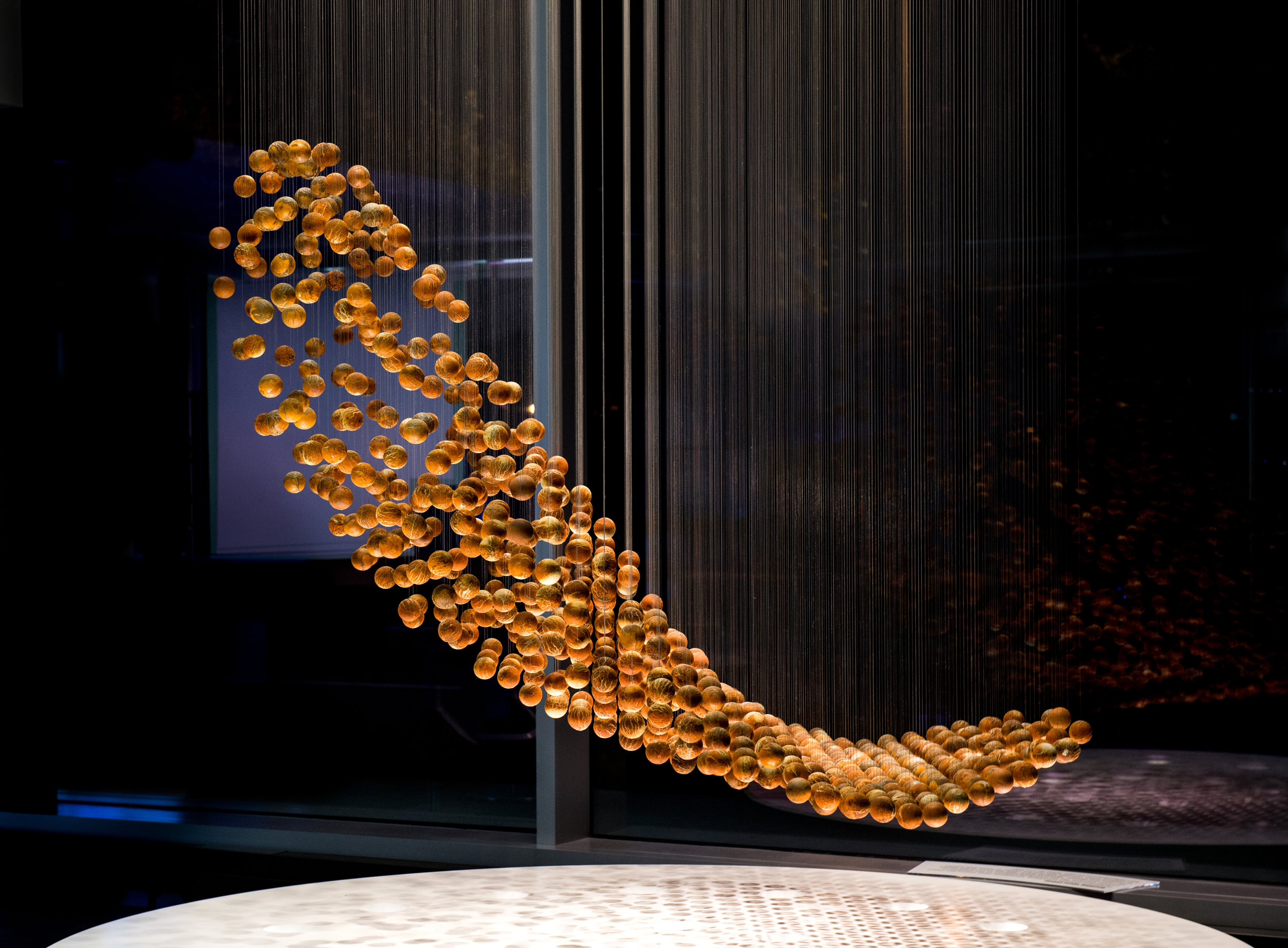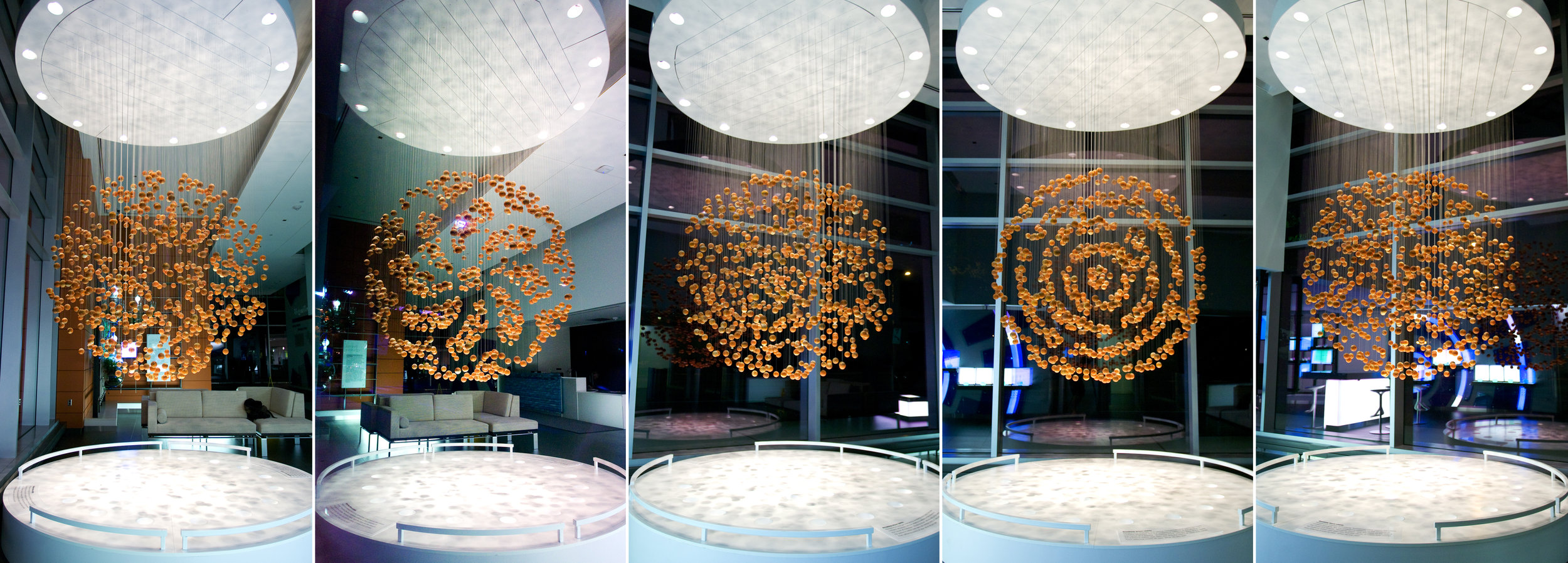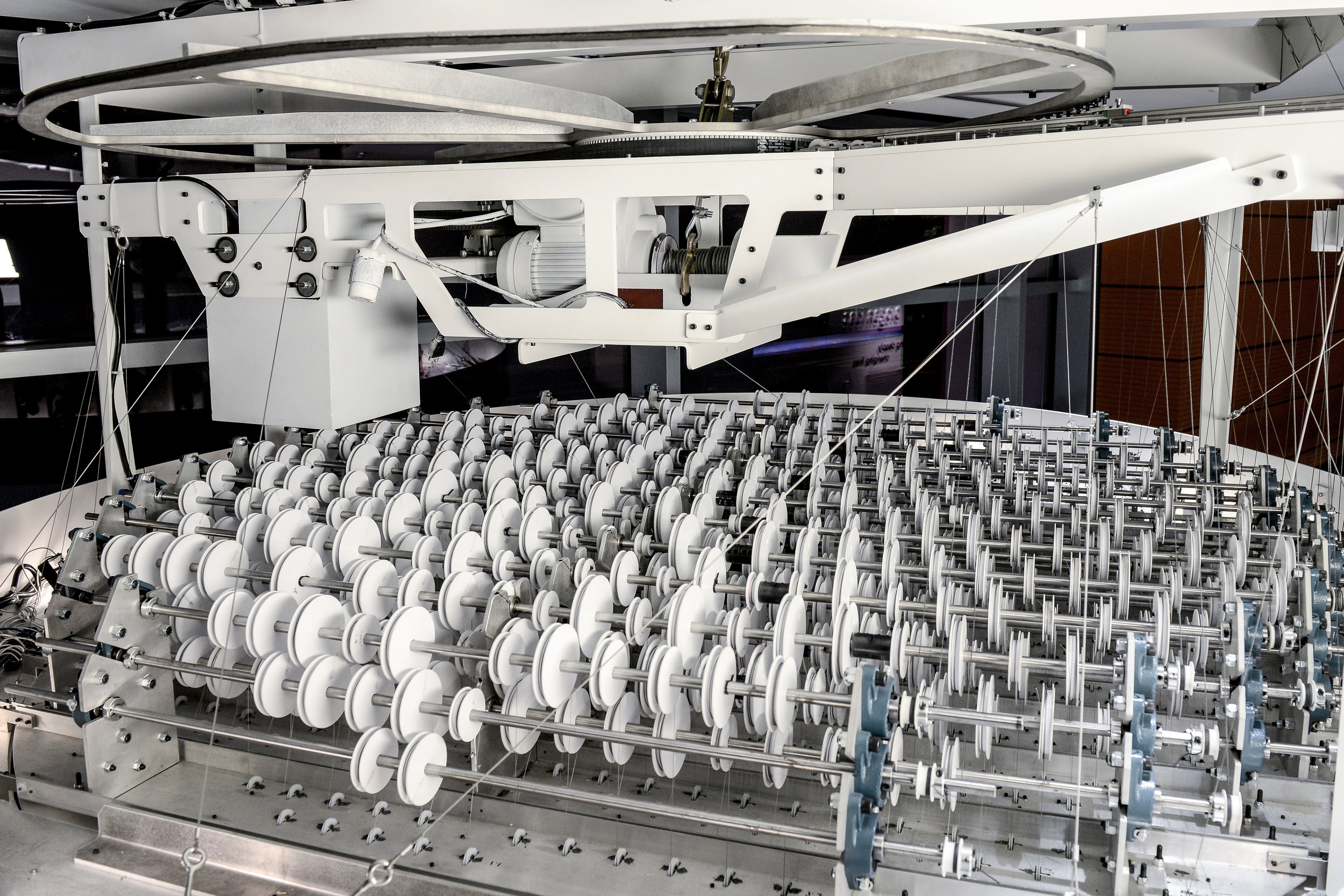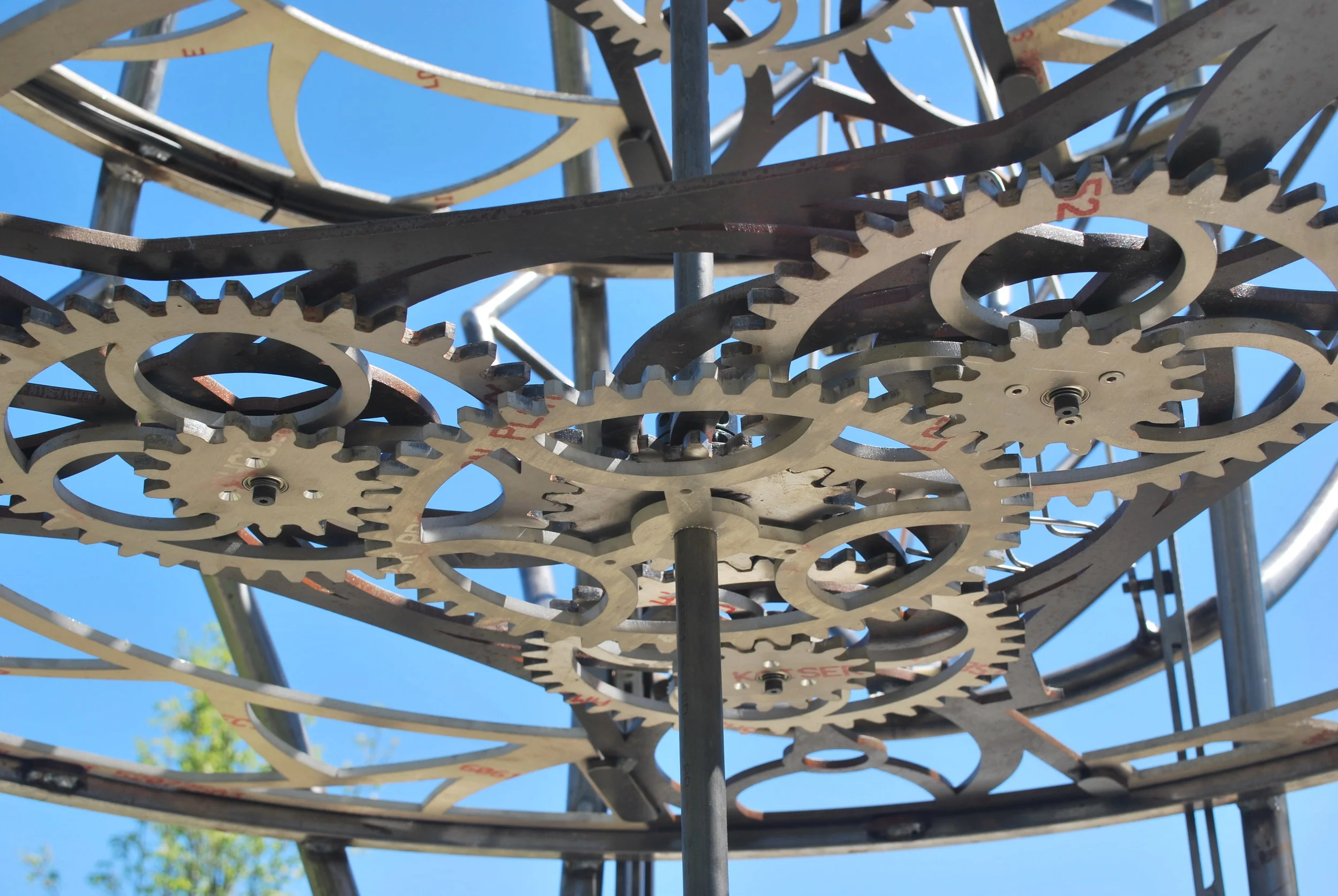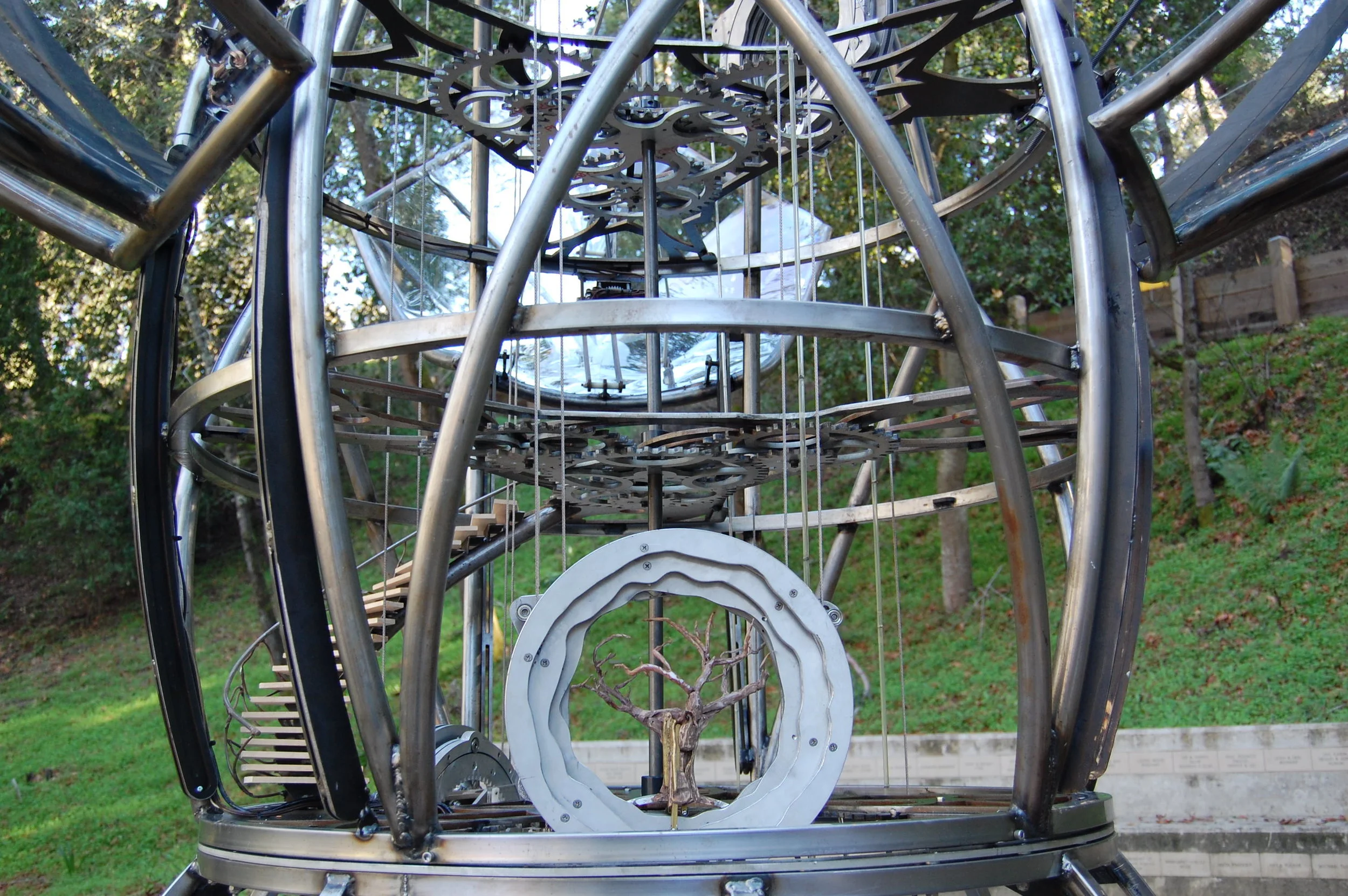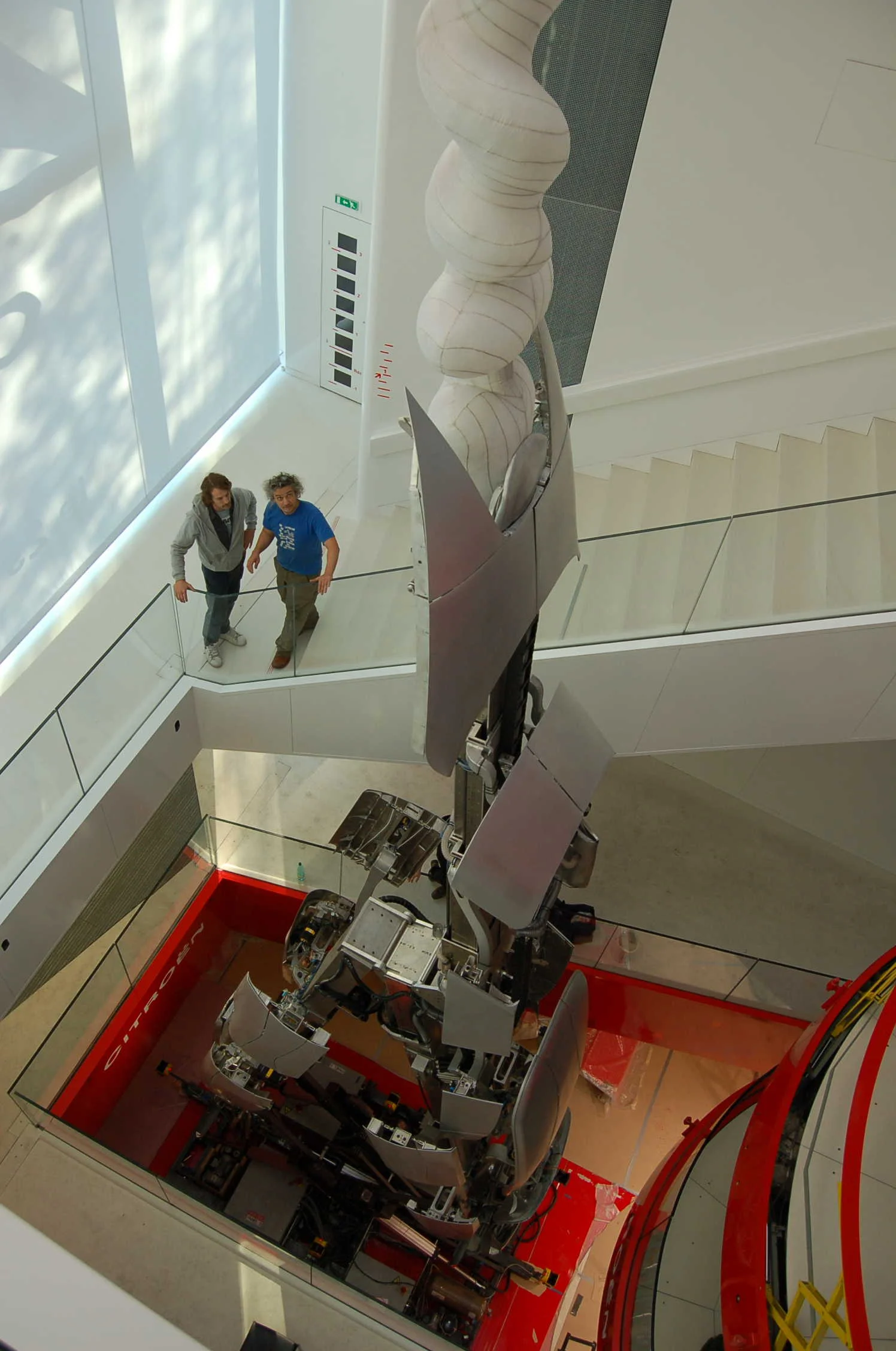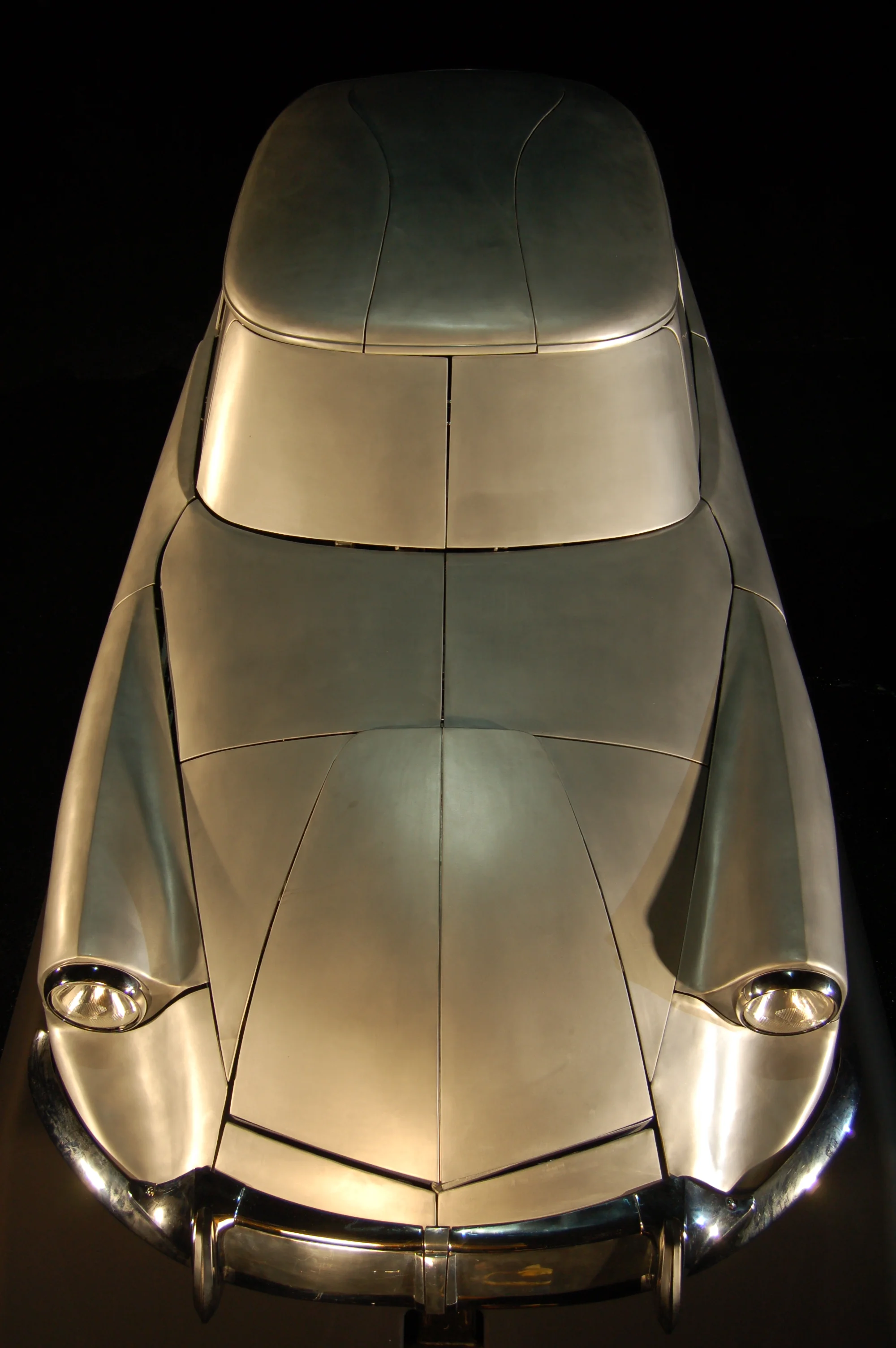On April 30th, 2019, Reed Parlier and Riley Howell lost their lives. Four other students were wounded, and classmates, families, friends, and an entire community were forever changed by a terrible event at UNC-Charlotte. In the wake of this tragedy, the UNC-Charlotte Niner Nation and the City of Charlotte are united with the strength, resilience, and hope that is illuminated by this memorial.
Remembrance is an act, a ritual, and an engagement with the past. Grounded by themes of illumination and healing, the Constellation Garden Remembrance Memorial aims to make remembrance visible and held in the light, to strengthen the community through human connection, to acknowledge the magnitude of loss, and to embrace an optimistic and hopeful future.
The memorial includes an interactive sculpture made of large steel arcs grounded with six pillars, one to represent each person killed and wounded. The crisscrossing arcs rise 25’ above a white granite plaza, creating a voluminous ceiling that hovers above a circular gathering space embraced by planted landforms and an arc of trees, flowers, and plants. Two narrow, arcing paths unfurl from the plaza, passing through lush native gardens that bloom white in the spring to commemorate the anniversary of the shooting and purple in the fall to welcome students back to campus. Sculpted stone pebble seats sit below the constellation and are designed to hold a reclined body comfortably – smooth and soft.
A web of thin cables is anchored by the arcs and holds an array of lights, suspended against the sky. These lights are frozen in a map of the constellations of stars in the night sky on April 30, 2019, at a moment when time stopped for all of those affected by this tragedy. Reed and Riley’s pillars are wrapped with commemorative bands that, when touched, send a kinetic wave of increased light intensity through the constellations above, signifying the network of those affected by gun violence. Light ripples quietly and slowly across the sculpture, representing the ever-present constellation of trauma, pain, and loss caused by gun violence.
The sculpture represents both the vast emptiness of the night sky, but also the feeling of being connected and together. Designed to heighten the senses, the sculpture is at once delicate, strong, reflective, and ephemeral. The landscape holds the sculpture carefully and softly within it, integrating additional opportunities for seating for contemplation, and reflection, and remembrance.
Thank you to an incredible team of collaborators: Ten X Ten Landscape Architecture and Susan Hatchell Landscape Architecture, PLLC.
With additional assistance from 35 North, Civility Localized, Engineered Designs Inc., Heartland Contracting, LLC, Lynch Mykins StructuralEngineers, Peachland Design & Fabrication, and TranSystems.
Thank you to the UNC Charlotte staff and community, and the families and friends of those impacted by this event for all their support in the creation of this memorial.
Commissioned by UNC-Charlotte
Hypersonic
Bill Washabaugh
Perry Nascek
David Gould
Alex Garcia
Yevgeny Koramblyum
Assistance from: Anika Kash, Mischa Langley
Thanks to RGB Lights for supplying the lights.
Photos: Mitchell Kearney
Hypersonic supports the following gun violence charities:
Violence Policy Center
https://vpc.org/
Everytown for Gun Safety
https://www.everytown.org/















